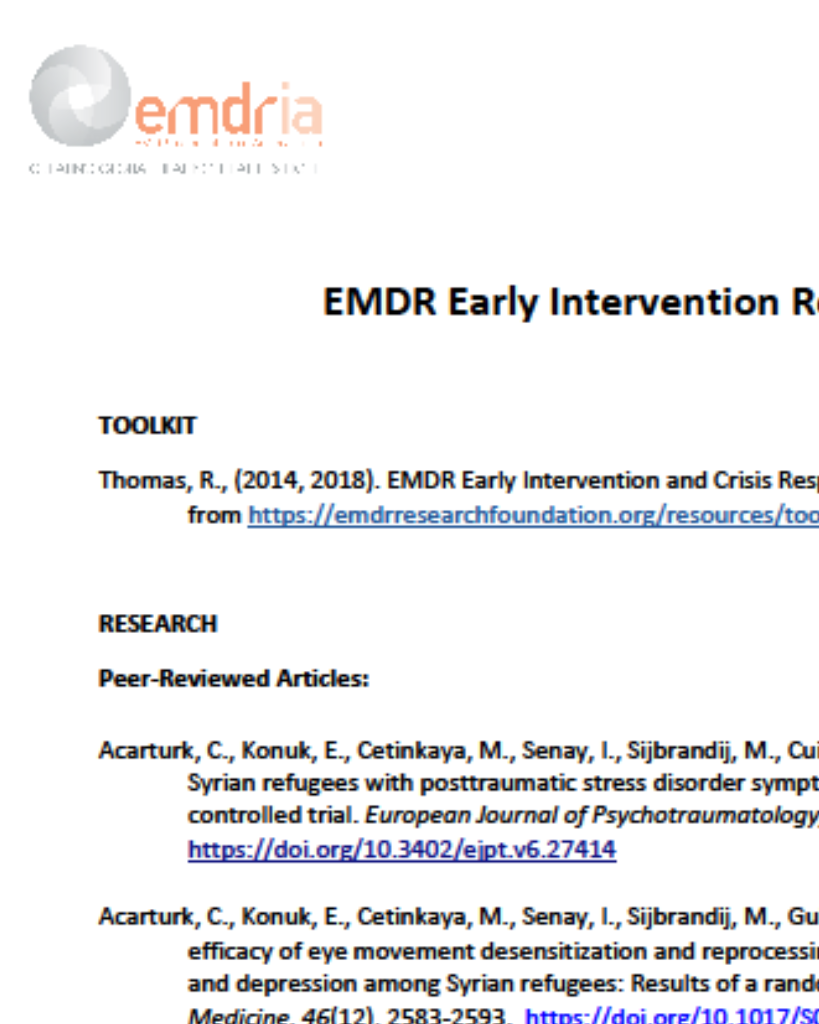Eye-movement intervention enhances extinction via amygdala deactivation
This article demonstrates with f-MRI imaging that goal-directed eye-movements, like working-memory tasks, deactivate the amygdala, the core neural substrate of fear learning.
Article Abstract
“Improving extinction learning is essential to optimize psychotherapy for persistent fear-related disorders. In two independent studies (both n = 24), we found that goal-directed eye movements activate a dorsal frontoparietal network and transiently deactivate the amygdala (ηp2 = 0.17). Connectivity analyses revealed that this downregulation potentially engages a ventromedial prefrontal pathway known to be involved in cognitive regulation of emotion. Critically, when eye movements followed memory reactivation during extinction learning, it reduced spontaneous fear recovery 24 h later (ηp2 = 0.21). Stronger amygdala deactivation furthermore predicted a stronger reduction in subsequent fear recovery after reinstatement (r = 0.39). In conclusion, we show that extinction learning can be improved with a noninvasive eye-movement intervention that triggers a transient suppression of the amygdala. Our finding that another task which taxes working memory leads to a similar amygdala suppression furthermore indicates that this effect is likely not specific to eye movements, which is in line with a large body of behavioral studies. This study contributes to the understanding of a widely used treatment for traumatic symptoms by providing a parsimonious account for how working-memory tasks and goal-directed eye movements can enhance extinction-based psychotherapy, namely through neural circuits (e.g., amygdala deactivation) similar to those that support cognitive control of emotion.”
—Description from publisher
Article Access
Open Access
de Voogd, L. D., Kanen, J. W., Neville, D. A., Roelofs, K., Fernandez, G., & Hermans, E. J. (2018). Eye-movement intervention enhances extinction via amygdala deactivation. Journal of Neuroscience, 38(40), 8694-8706. Open access: https://doi.org/10.1523/JNEUROSCI.0703-18.2018
About the Journal
JNeurosci seeks to advance neuroscience research by publishing and widely disseminating high-quality research representative of the breadth of neuroscience; ensuring transparent, rapid, and fair peer review; and providing outlets for open discussion and debate that are not available elsewhere.
Date
October 3, 2018
Creator(s)
Lycia D. de Voogd, Jonathan W. Kanen, David A. Neville
Contributor(s)
Karin Roelofs, Guillen Fernandez, Erno J. Hermans
Practice & Methods
BLS, Efficacy, Mechanisms of Action, Neurobiology
Extent
12 pages
Rights
Copyright © 2018: theauthors
APA Citation
de Voogd, L. D., Kanen, J. W., Neville, D. A., Roelofs, K., Fernandez, G., & Hermans, E. J. (2018). Eye-movement intervention enhances extinction via amygdala deactivation. Journal of Neuroscience, 38(40), 8694-8706. Open access: https://doi.org/10.1523/JNEUROSCI.0703-18.2018
Audience
EMDR Therapists, Other Mental Health Professionals
Language
English
Content Type
Article, Peer-Reviewed
Access Type
External Resource, Open Access





